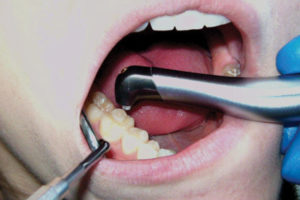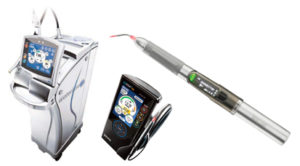By Dr. Michael Koceja
Now that we are well into the New Year—has anything changed? Have you kept your new year’s resolutions; eating better, drinking less, are those unwanted extra pounds gone from your frame? How about your dental practice; have you carried through on your ideas to improve your practice and the level of care you provide to your patients? Maybe you don’t plan on changes and are ok with complacency, but dentistry constantly changes and our patients constantly change, not only their dental health needs, but also their knowledge of the care they receive.

The Internet and social media are powerful tools for our patients to learn and educate themselves about dentistry and technology. We must be ready to change the way we provide care to our patients and we must constantly evolve as we practice. Now I know some of the principles of dentistry are set in stone and provide a great foundation year in and year out, but technology changes and constantly improves, which allows us to improve and provide better care for our patients. I believe change is good. Every January, I sit myself down and make a list of how I can improve my skills, improve my practice, and improve the dental care provided for my patients. Some of the typical ideas that come up year after year are great, but never instituted and some ideas are duds. Some of the duds include: changing our hours to accommodate our patients (this never works); buying supplies on the Internet (the deals never are as good as they sound); and service (there is none). However, some ideas are great ways to improve our practices, like attending innovative continuing education classes or looking at new equipment—you can only put so much duct tape on a dental chair! Then there is technology, I believe:
- New technology is what our patients expect
- New technology is what makes dentistry better
- New technology is what makes dentistry fun
Each year we look at new technology and how it has improved; if the price has dropped; or if it really works. One technology that continues to be in the forefront of dentistry is the clinical use of the laser in dentistry. The efficiency of lasers cutting hard tissue (Class 1–6) is now comparable to high-speed handpieces without the damaging side effects. The scope of procedures they can be used for covers the entire dental spectrum and prices are now in the realm of every dental office. So why do so many dentists continue to put off what I believe is the standard of care in dentistry? Being a dentist for 25 years, I believe I know some of the answers to this question, one of which is the fear of change, how we can overcome this fear of change and possible technological failure.
Advances in laser technology make this the best time to introduce this technology into your practice and make this your best year ever.
So let’s take a few minutes to look at what drives a dentist to technology, what dentists fear about technology, and how lasers can help improve the quality of care we provide for our patients. I believe every dentist can benefit greatly from laser technology and I will outline how they can accomplish this and improve their bottom line. Being a dentist and having trained thousands of dentists to use lasers, I can offer a unique perspective on how lasers can change your practice this year.

I believe most dentists (most people) are a little scared of change. The old adage, “if it isn’t broke, don’t fix it” still resonates in many offices. This leads to complacency, or a certain comfort level, but often a certain comfort level leads to the same frustrations over and over, e.g., the inability to achieve a great crown impression because of excess tissue or subgingival margins or the inability to properly fill and contour subgingival class V’s. How we treat periodontal disease and our endodontic predictability also can cause stress in the daily practice of dentistry and the ever-evolving challenge to provide the best esthetics in our cosmetic procedures can sometimes be difficult to achieve. We know there are ways to improve patient care and the most versatile way is by utilizing lasers. Laser technology levels the playing field, giving us the ability to perform numerous procedures to supplement the tools we use on a daily basis. Examples of beneficial laser procedures include:
- Tissue contouring and crown lengthening with minimal bleeding or tissue damage.
- Exposing subgingival margins to make crown & bridge impressions become more predictable.
- Cosmetic recontouring to provide extra special esthetic results.
- Adjunct periodontal procedures to provide a new level of treatment of periodontal disease in a less invasive, patient-friendly way.
- Laser endodontic disinfection techniques, which have been shown to greatly enhance the disinfection of the apical 1⁄3 of the canal.
More and more everyday procedures can be performed with a laser, but perhaps the greatest breakthrough in laser technology is hard-tissue cutting. Lasers have achieved the coveted “as fast as a high-speed handpiece” distinction. In most instances, lasers can cut enamel and dentin with the same efficiency as a high-speed, with minimal or no local anesthetic required.
Having taught thousands of doctors to use all tissue lasers (YSGG), I can say most are skeptical about cutting speed when we start their training, but convinced of their capabilities when we finish. The most common response after cutting their first prep on a patient is “it cuts a lot faster than I thought it would.” Having overcome this hurdle and seeing all the everyday applications lasers have in the dental office has brought lasers time and time again to the front of the list of most desired technology a dentist would like to add to
their practice.
With lasers becoming more affordable, what then is still holding some dentists back from incorporating laser dentistry into their practice? I believe it is a fear of change. All dentists have this fear—some just overcome it a lot easier. Lasers are safe, easy to use, the learning curve is not difficult at all and the benefits are so numerous that we can’t continue to overlook this technology. Add the fact that our patients love new technology and want to be part of it and you have a win-win situation. A technology that allows us to do more procedures (less referrals) more efficiently (multiple quadrant dentistry without anesthetic) and impress our patients (restorative procedures on young children without an injection) is amazing—and is available right now.
Now that we are well into the new year, and our promises to ourselves have largely gone away, I feel it’s time to time to get to work and think about the promises we have made to our patients—to continuously provide the highest level of dental care and, to ourselves—to continue to learn and be open minded about new technology, to educate ourselves and most of all remove the complacency that we sometimes fall into.
I believe dentists are some of the most compassionate people on this planet and constantly thrive to provide the best possible treatment for their patients, but sometimes we need a little push; we need a little change—laser dentistry can provide that change. Advances in laser technology make this the best time to introduce this technology into your practice and make this your best year ever. Just remember, sometimes a little change
is good.
Dr. Michael Koceja has trained thousands of dentists and hygienists on the incorporation of lasers into their practices. His everyday realistic approach cuts through the hype and concentrates on the numerous ways lasers can benefit dentists to provide a higher level of care for their patients. Dr Koceja can be reached at mkoceja@comcast.net or 760-500-6189 and gladly welcomes your questions and comments.
